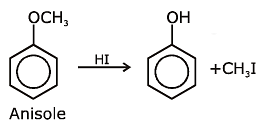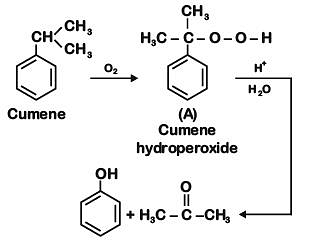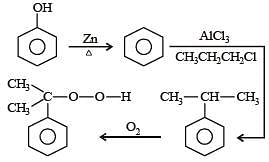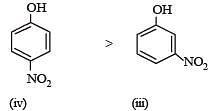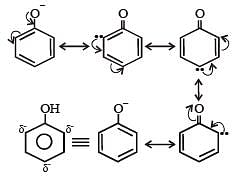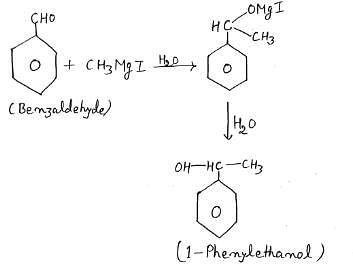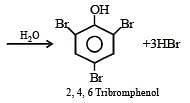31 Year NEET Previous Year Questions: Alcohols, Phenols & Ethers - NEET MCQ
30 Questions MCQ Test Chemistry Class 12 - 31 Year NEET Previous Year Questions: Alcohols, Phenols & Ethers
What is the IUPAC name of the organic compound formed in the following chemical reaction ? [2021]

Anisole on cleavage with HI gives: [2020]
| 1 Crore+ students have signed up on EduRev. Have you? Download the App |
Reaction between acetone and methylmagnesium chloride followed by hydrolysis will give: [2020]
The structure of intermediate A in the following reaction, is [2019]

Phenol is distilled with Zn dust followed by Friedel Crafts alkylation with propyl chloride in the presence of AlCl3 to give a compound (B). (B) is oxidised in the presence of air to form the compound (C). The structural formula of (C) is [NEET Kar. 2013]
Which of the following compounds can be used as antifreeze in automobile radiators ? [2012 M]
In the following sequence of reactions 
 the end product (C) is :[2012]
the end product (C) is :[2012]
When glycerol is treated with excess of HI, it produces: [2010]
Which one of the following compounds has the most acidic nature? [2010]
Consider the following reaction: [2009]


The product Z is:
Among the following four compounds[2010] (i) phenol (ii) methylphenol (iii) meta-nitrophenol (iv) para-nitrophenol the acidity order is :
H2COH · CH2OH on heating with periodic acid gives: [2009]
Consider the following reaction, [2009]the product Z is:

Ethylene oxide whent reated with Grignard reagent yields [2006]
The major organic product in the reaction, CH3 — O — CH(CH3)2 + HI → Product is [2006]
Which of the following will not form a yellow precipitate on heating with an alkaline solution of iodine? [2004]
When phenol is treated with CHCl3 and NaOH, the product formed is [2002]
n-Propyl alcohol and isopropyl alcohol can be chemically distinguished by which reagent?
Which of the following is correct ? [2001]
Propan - 1- ol may be prepared by the reaction of propene with [2000]
The ionization constant of phenol is higher than that of ethanol because : [2000]
1-Phenylethanol can be prepared by the reaction of benzaldehyde with [1997]
The stablest among the following is [1994]
What is formed when a primary alcohol undergoes catalytic dehydrogenation ? [1993]
Which one of the following on oxidation gives a ketone ? [1993]
Increasing order of acid strength among p-methoxyphenol, p-methylphenol and p-nitrophenol is [1993]
Ethanol and dimethyl ether form a pair of functional isomers. The boiling point of ethanol is higher than that of dimethyl ether, due to the presence of [1993]
When phenol is treated with excess bromine water. It gives [1992]
Methanol is industrially prepared by [1992]
How many isomers of C5H11 OH will be primary alcohols ? [1992]
|
108 videos|286 docs|123 tests
|


